Do you remember what your school looked like back when you were a kid? Today, some schools are continuously raising the bar when it comes to innovation and are achieving incredible results. From 3D printed school at Madagascar to a multilayered ecosystem of climates and environments in Madrid, we have selected some bespoke designs and schemes that will teach our children to be people of the future.


Hut v1.0 by Studio Mortazavi and Thinking Huts
Aiming to help provide infrastructure to communities that need it most, the non-profit organization Thinking Huts is planning to 3D print a prototype school in Fianarantsoa, a city in the southern region of Madagascar. The pilot project, known as Hut v1.0, has been designed by Studio Mortazavi, an architectural design agency based in San Francisco, Lisbon and Paris.
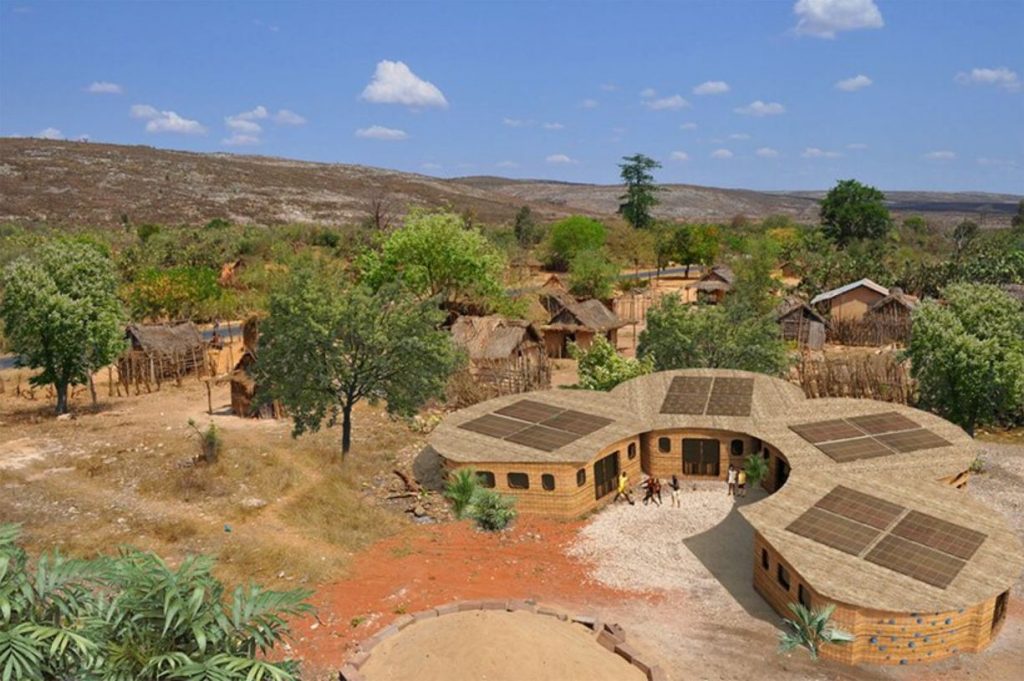
Hut v1.0 by Studio Mortazavi and Thinking Huts
The walls of the school will be 3D printed using a special cement mixture emitting less CO2 compared to traditional concrete. The finished school will be a hybrid of 3D printed walls and locally sourced materials for the construction of roof, secure doors, and operating windows. Features like a vertical farm and solar panels enhance the sustainability of the project. Importantly, multiple pod configurations allow for easy expansion.
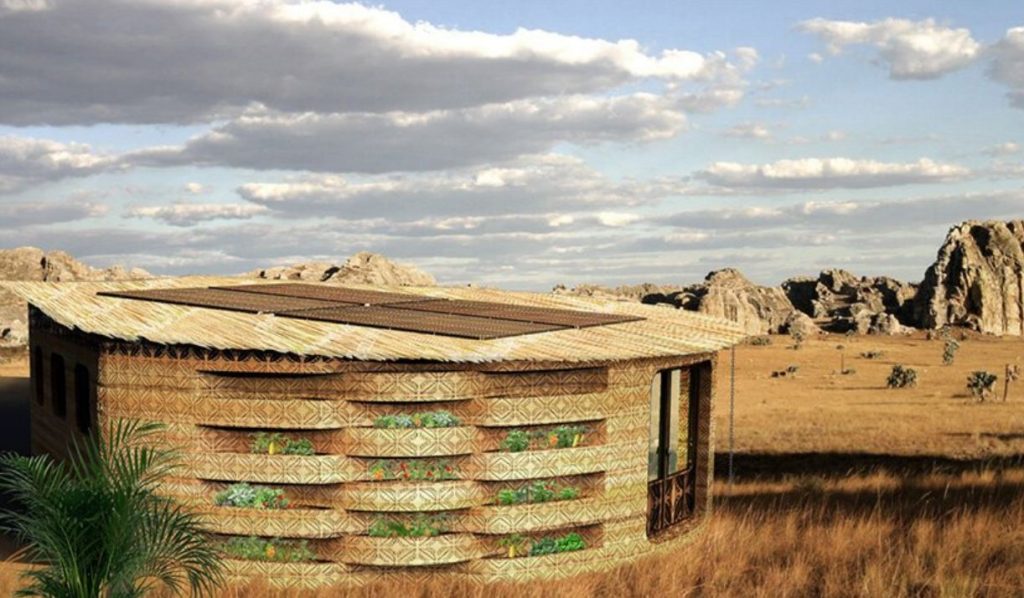
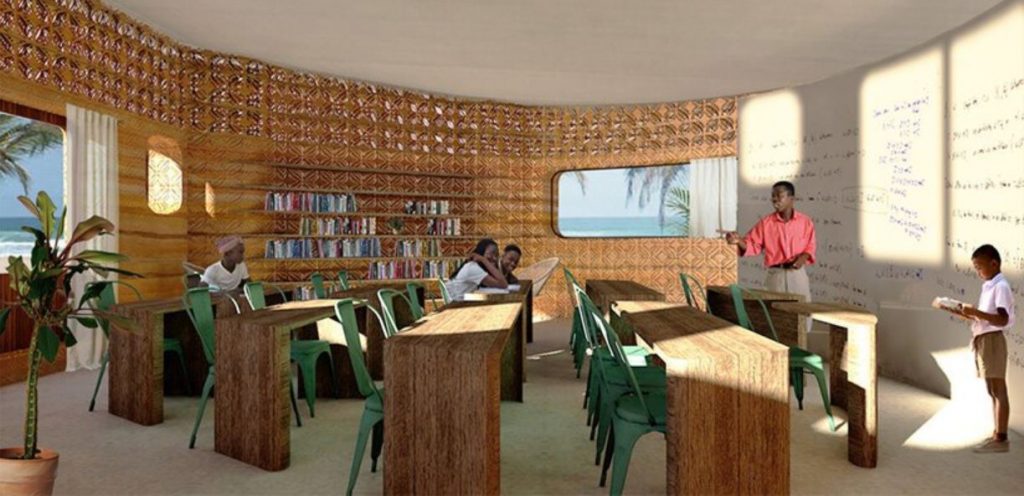
Hut v1.0 by Studio Mortazavi and Thinking Huts
The team says that 3D printing decreases construction time from months to days, while reducing the project’s carbon footprint. They also hope to teach community members how to use the 3D printer so that they can replicate the process to build more schools in the future.
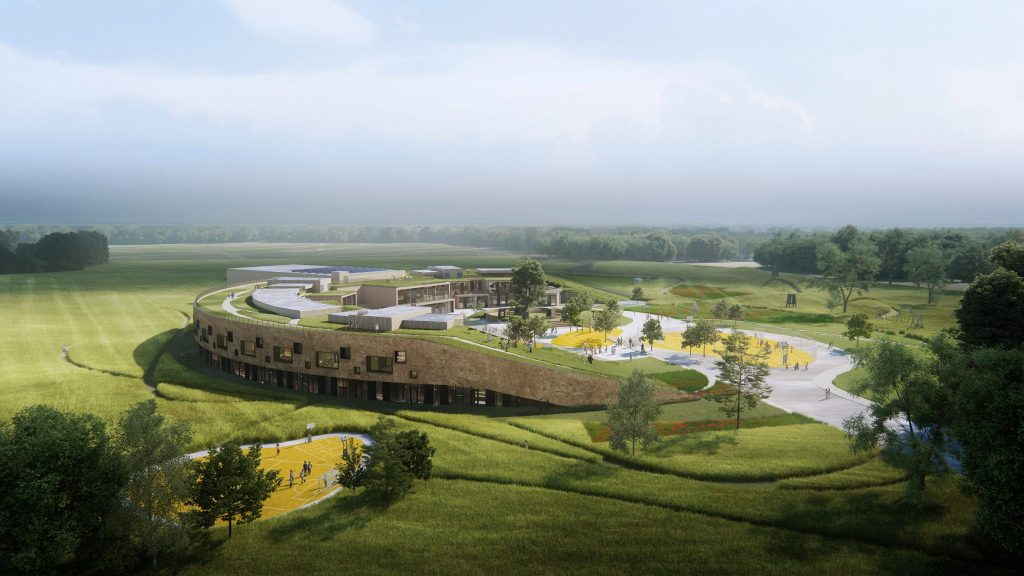
The New School by Henning Larsen (also header image)
Expected to open at the end of summer 2022, The New School, a primary school in Sundby, Denmark, by the local architecture studio Henning Larsen will be the country’s first school to be given a Nordic Ecolabel. This is the official sustainability certificate for the region and takes into account the project’s energy consumption, indoor climate, chemical exposure and sustainable material use.

The New School by Henning Larsen
The design comprises a two-storey C-shaped structure, and features a walkable green roof that merges into the terrain and blends in with the surrounding landscape. The roof can be accessed by the public at all times, which gives the school the potential to become a hub for the community.
Inside, a number of spaces will open up to the outside to take advantage of its proximity to nature. The design also includes sports facilities, music rooms, a library and large teaching spaces. Importantly, the school’s interior spaces can be changed, reorganised and relocated to suit its needs. The building’s structure allows for an expansion from two to three storeys, which enables future development of the school.

Reggio school by Andrés Jaque (Office for Political Innovation)
Nearing completion is the construction of the Reggio school in Madrid, which has been conceived by international architectural practice Andrés Jaque / Office for Political Innovation as a complex, vertical ecosystem that prompts in children a desire for exploration and inquiry.
Following the pedagogical ideas and principles of Loris Malaguzzi, the design aims to empower children’s capacity to deal with unpredictable challenges and potentials and make it possible for them to direct their own education. To achieve this, the architects have designed the building as a multiverse where the layered complexity of the architectural environments becomes readable and experiential.

Reggio school by Andrés Jaque (Office for Political Innovation)
The ground floor accommodates classrooms for younger students, while on the second floor students in intermediate levels coexist with water and soil tanks that nourish an indoor forest. The forest reaches the upper levels under a greenhouse structure where classrooms for older students are organized around this inner forest, as in a small village. This stacked structure implies an ongoing maturity process that is translated into the growing capacity of students to explore the school ecosystem on their own.
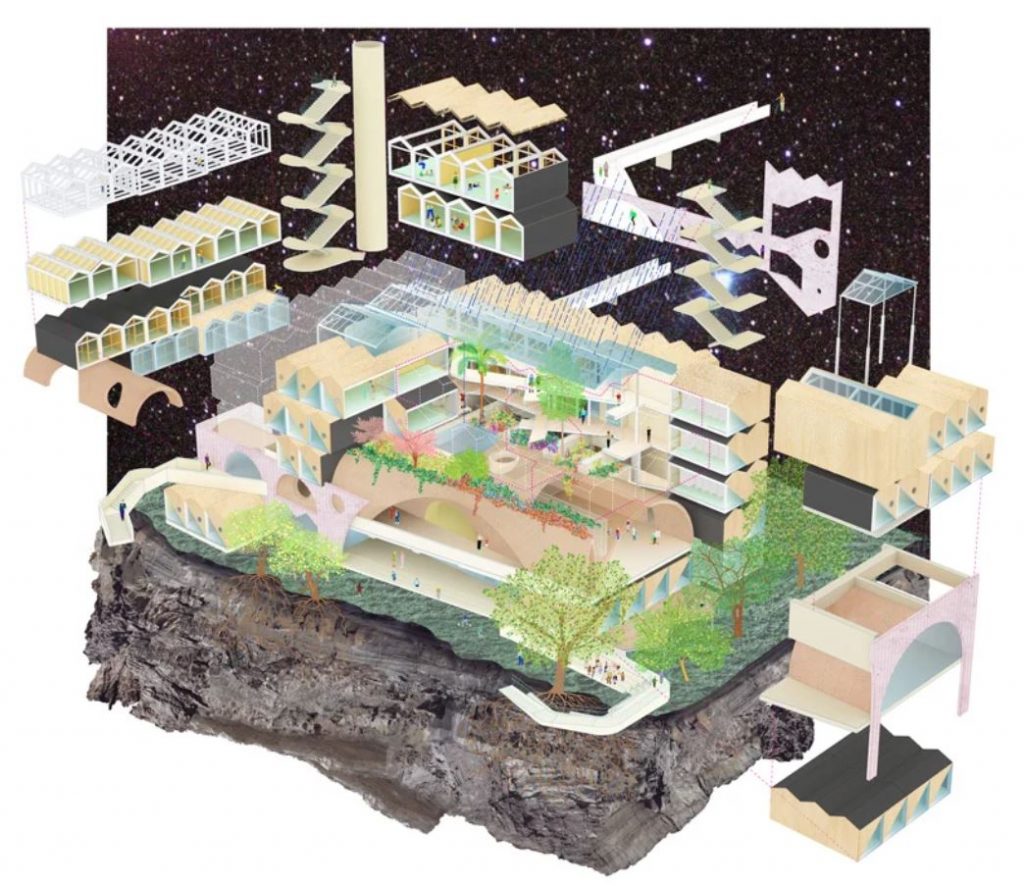
Reggio school by Andrés Jaque (Office for Political Innovation)
The second floor with its big central space of around 465 sqm around the roots of the inner forest also serves as the main social gathering space of the school. In this cosmopolitan agora vegetation, water, and soil frame a changing program of gymnasium, art classroom, conference and events hall, and gathering space for school assemblies. Services, waste management, and storage are part of the processes, to which the school’s architecture provides access.